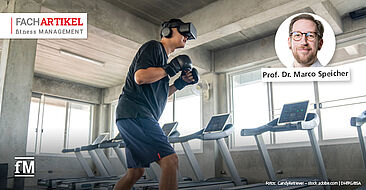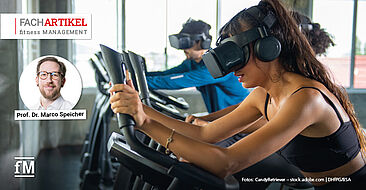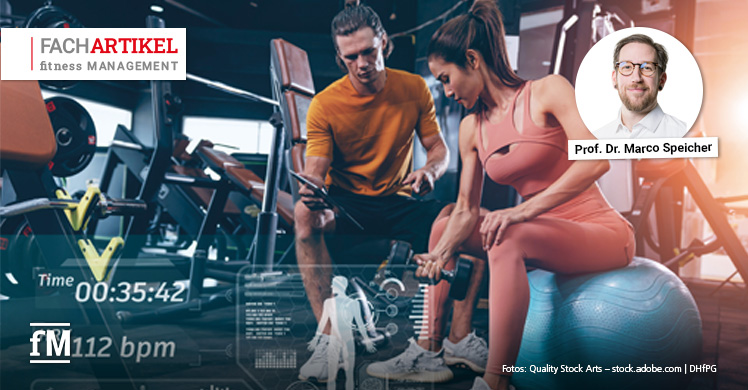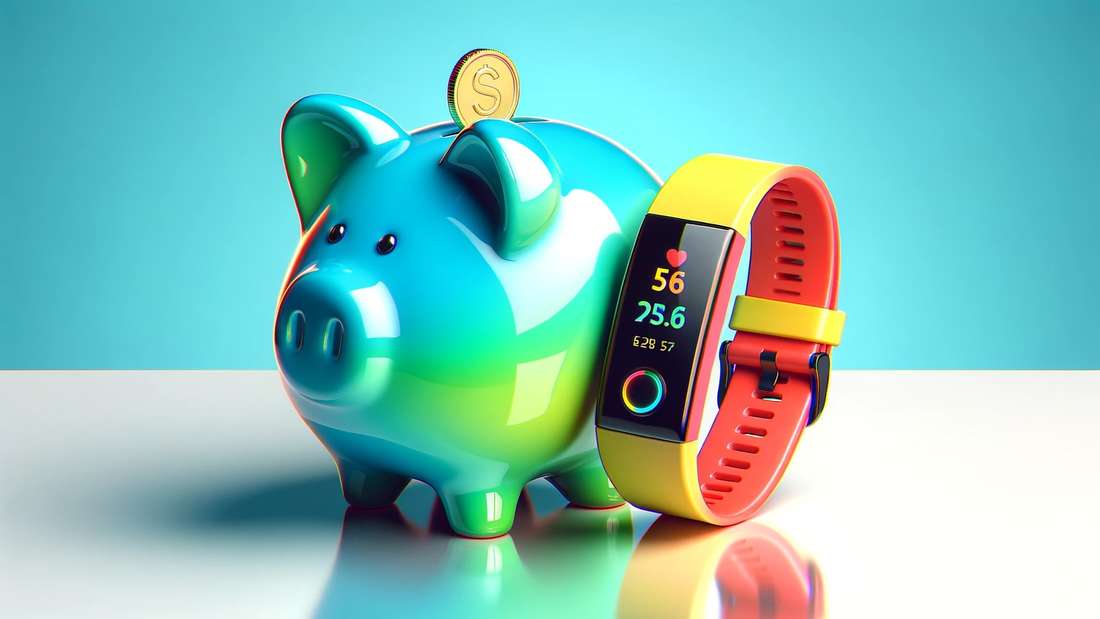The importance of Artificial Intelligence (AI) in the fitness and health industry cannot be overstated in today’s digital age. AI technologies have ushered in a new era of personalized care and make it possible to collect, analyze and interpret huge amounts of data.

Artificial intelligence is being used in the fitness and health industry by portable devices and applications used to to monitor and optimize physical activityto record important health indicators and to offer tailor-made training plans.
For example, AI-supported fitness trackers and wearables collect and analyze Data on physical activity, sleep patterns and heart rate and thus help the individual to Monitor health and improve fitness level.
Reading tip: You can find out what wearables can do and how they can be used in the specialist article ‘Smart training companions’ by Andreas Barz.
AI-driven performance analysis tools provide coaches and athletes with invaluable insights into the athletic performanceserve the Optimization of game and training strategies and can be Prevention of injuries be used.
In addition, AI plays a crucial role in healthcare, from Early detection and diagnosis of disease using machine learning algorithms to Drug development and the Personalization of treatments (Esteva et al., 2017).
Follow the fM WhatsApp channel now!
These technological advances have led to a data-driven approach in the areas of fitness, sports and health, which enables the individual to to make informed decisions about one’s health, athletic performance to optimize and Early detection and prevention of diseases to facilitate.
The following is an overview of current applications of AI in the fitness, sports and health industry with regard to process optimization.
Predictive analytics for health risks
In recent years, the Application of AI developed rapidly and significant progress One of the most promising applications of AI is known under the technical term ‘Predictive Analytics’ and is also used in the context of health and physical performance.
This is a discipline within AI that Data analytics and machine learning used, to predict future events or trends. (Also interesting: ‘Gamechanger Artificial Intelligence’)
The application of predictive analytics in the fitness and health industry offers numerous other advantages in addition to the early detection of diseases or other health risks, such as more cost-efficient and personalized customer servicebecause with the help of AI Individual health and performance profiles are created and personalized training and nutrition recommendations are generated become.

This leads to tailored care strategies and potentially better outcomes. Early detection and preventive treatment of health risks can also Significantly reduce healthcare costsas expensive subsequent treatments can be avoided (Nithya & Ilango, 2017).
Here you can Interfaces of medical treatment with physical activity generated which will make an essential contribution to Improve general health and physical performance could afford.
Don’t miss any Fitness-NEWS more!
Follow us on WhatsApp, Facebook, LinkedIn & Instagram
For example, if we consider diseases of the metabolic syndrome or diabetes mellitus type 2predictive analytics could not only early detection of the health risks involved in the development take place, but also automatically a Recommendation for a training and nutritional intervention including contact persons in fitness and health facilities.
Thus, Customers in the fitness and health industry receive optimal support are offered.
Application of predictive analytics
The application of predictive analytics in healthcare requires extensive data sources and highly efficient algorithmsHere are the necessary steps, listed in order and briefly explained:
- At the beginning, the required health data collected from various sourcesincluding general Health data, performance and health diagnostics, medical findings and even Data from wearables like fitness trackers.
- The collected Data is then cleaned and in a uniform formatto ensure that they are suitable for analysis.
- If that Data volume large enough and cleaned as well as possible, the AI algorithms start with identify relevant features or patterns in the datawhich on Indicate health risks can.
- AI models such as neural networks or decision treeswill then be Based on the extracted features trained. This is done with historical dataaround the Maximize prediction accuracy.
- The trained model is used to future health risks or performance developments for specific patients or populations to predict.
- Based on the forecasts can Doctors and medical staff take appropriate preventive measuresto minimize health risks.

About the author
Prof. Dr. Marco Speicher heads the Department of Computer Science at the German University of Prevention and Health Management (DHfPG). In 2019, he received his doctorate from Saarland University on the topic of “Measuring User Experience for Virtual Reality”. From 2014 to 2019, he was a research assistant and doctoral student at the German Research Center for Artificial Intelligence (DFKI), where he worked in the Ubiquitous Media Technologies Lab (UMTL) and Innovative Retail Laboratory (IRL).
More from this author
More Technical article You can read this author’s work by clicking on one of the images below.


For example, Age, gender, height and weight of BMI formed and based on this a potential overweight or underweight be determined.
Are there any excess weight Add evidence from activity datawhich indicate that a patient is not very physically activeand the Nutritional data indicate an unhealthy dietbecomes The AI will most likely recognize a pattern here and a Make a recommendation for more exercise and a better diet.
Personalized training programs
AI plays a role in the fitness and health sector through Creation of personalized training and nutrition programs an important role (Bloch, Schumann & Clauss, 2022). Every body is unique, which is why No ‘one size fits all’ solution for fitness and health gives. (Also worth reading: ‘Digital Transformation’)

AI develops personalized training programs in steps similar to those of predictive analytics for the early detection of health risks and performance developments. After data collection and evaluation, the AI based on analyzed data and expert rules an individual training program.
Data sources can personal information, physical measurements, activity data of wearables and Nutritional information be. As the customer goes through the training program, the AI continuously collects datato send it to to adapt to current needs and goals.
Reading tip: ‘AI for customer loyalty’
As helpful and efficient as AI-supported programs can be, their Do not use or distribute products without checking them. One human control authority with reference to the customer and technical background knowledge is the decisive success factor.
The Information and recommendations from the AI model can be used by trainers as a basis and build on this by creating a greater focus on training support as well as the practical implementation of the exercises or movement correction, which contributes to process optimization in everyday studio life and relieves the burden on staff.
Further areas of application of AI
Many fitness apps and wearables are already using AI to provide personalized training plans, trends and health recommendations. They record data such as step count, heart rate and sleep patternsto help users To help improve their health.
Also in the rehabilitation – after injuries or operations – AI-based technology can be used to to create personalized training programsthat can accelerate health improvement and performance enhancement.

Another example of AI application: In professional sports, personalized training programs are increasingly contribute to the Optimize athlete performanceby clicking on their address individual strengths and weaknesses.
Personalized training programs through AI has the potential to fundamentally change the fitness and health industryThey enable people to Achieve goals more efficiently and improve their health.
Also interesting: ‘AI – The legal situation’
This innovative application of AI shows how Technology can help improve our wellbeing and support us on the path to a healthier lifestyleHowever, it is important to ensure that these Technology used responsibly and also the User privacy and security maintained remains.
Conclusion
Predictive analytics and personalized training programs are promisingbut face challenges such as Data protection and access to technology.
The Use of AI in fitness and health requires careful considerationthere AI cannot replace personal care at different levels Human professionals should retain responsibility for decisions, while AI as efficient support serves to enable people to concentrate on their actual strengths.
Literature list
Esteva, A., Kuprel, B., Novoa, R., Ko, J., Swetter, SM, Blau, HM et al. (2017). Dermatologist-level classification of skin cancer with deep neural networks. Nature, 542, 115–118.
Bloch, W., Schumann, M. & Clauss, D. (2022). Live-remote training program for cancer follow-up care. Accessed on November 20, 2023.
Nithya, B. & Ilango, V. (2017). Predictive analytics in healthcare using machine learning tools and techniques. In International Conference on Intelligent Computing and Control Systems (ICICCS 2017), 492–499.
You can cite this article as follows:
Speicher, M. (2024). AI in the fitness and health industry. fitness MANAGEMENT international, 1 (171), 108–110.





